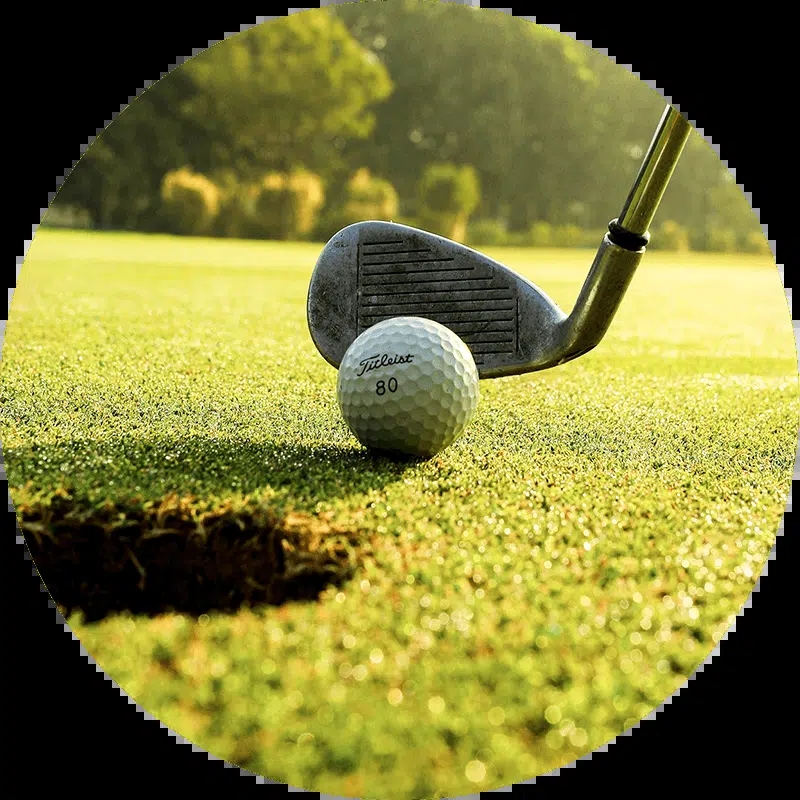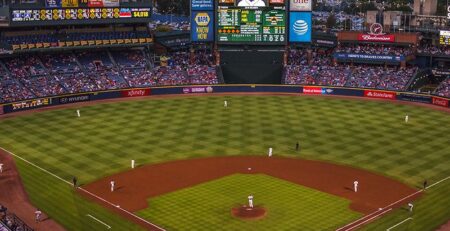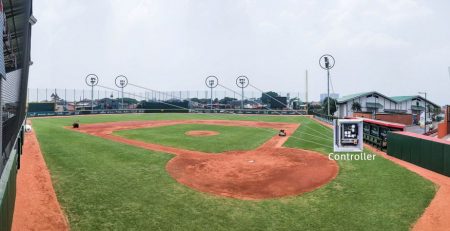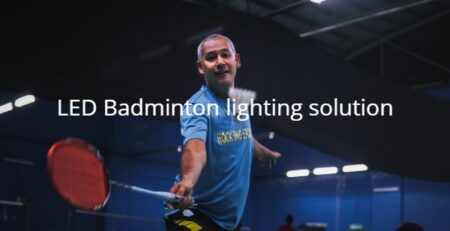Golf Range Lighting Design: The Ultimate Guide
Illuminating golf driving ranges for nighttime use has become increasingly popular among golf enthusiasts. The key to enjoying a successful game is ensuring sufficient lighting, both vertical and horizontal illumination. This can be achieved through well-designed lighting plans. The key to enjoying a successful game is ensuring sufficient lighting, both vertical and horizontal illumination. This can be achieved through well-designed lighting plans. With the advancements in outdoor LED lighting technology, golf range lighting has transformed the way players practice and enjoy the sport after sunset. By utilizing efficient LED floodlights and spotlights, these artificial lighting systems enhance horizontal illumination and vertical illuminance on the golf course, allowing golfers to extend their playing hours and make the most out of their practice sessions. This lightning setup greatly enhances the game experience.
Golf lighting not only increases accessibility but also ensures a safe and enjoyable experience for players during evening hours. The carefully designed horizontal illumination provided by LED sports lighting solutions offers consistent light distribution across the range, minimizing shadows and creating an optimal environment for precise shots.
In contrast to traditional lighting methods, such as high-intensity discharge lamps or metal halides, LED lights offer numerous advantages for vertical golf driving range. These led golf floodlights consume less energy, have longer lifespans, require minimal maintenance, and provide free lighting that is environmentally friendly. They are perfect for vertical installations in a golf driving range.
By investing in quality range lighting, golf courses can cater to the needs of avid players who seek to improve their skills regardless of daylight limitations. The next time you head out for a nighttime game or practice session at your local range, remember that well-designed LED-based golf range lighting can significantly enhance your overall experience.

Table of Contents
Benefits of Golf Range Lighting
Convenient Practice Opportunities
Golfers often have busy schedules, making it difficult for them to find time for practice during daylight hours. However, having a sufficient lighting system in place can help golfers practice at any time. Lighting plans that adhere to driving range lighting standards are essential for creating optimal conditions for nighttime practice. However, having a sufficient lighting system in place can help golfers practice at any time. Lighting plans that adhere to driving range lighting standards are essential for creating optimal conditions for nighttime practice. However, with the installation of effective golf range lighting, players can conveniently continue their practice sessions even after work hours. This flexibility allows golf enthusiasts to hone their skills at a time that suits them best, ensuring they don’t miss out on valuable practice time at the driving range. The driving range lighting standards further enhance the experience.
Enhanced Safety Measures
Playing golf at night can pose safety concerns due to poor visibility. However, with well-lit surroundings provided by golf range lighting, these concerns are significantly reduced. The illumination ensures that players can clearly see the course layout and any potential hazards, minimizing the risk of accidents or injuries. Improved visibility enables golfers to track their shots more effectively and locate their balls with ease.
Increased Revenue Opportunities
For golf courses looking to boost their revenue streams, investing in golf range lighting proves beneficial. By extending the operating hours beyond sunset, courses can attract more players who prefer practicing or enjoying a round of golf in the evening. This increased footfall directly translates into higher revenue opportunities for both the golf course and its associated facilities, such as pro shops and restaurants. The installation of efficient golf lighting, such as LED golf floodlights, can greatly enhance the overall experience for players and attract more visitors to the course.
Unique Ambiance and Enhanced Experience
The introduction of proper lighting in a golf range creates a unique ambiance that elevates the overall experience for players and spectators alike. The soft glow illuminating the course against a dark backdrop adds an element of enchantment to the game. Golfers appreciate this aesthetic appeal as it enhances their enjoyment while playing under lights—a departure from traditional daytime rounds.
Furthermore, an illuminated driving range with a high-quality LED golf course lighting system offers an exciting atmosphere where friends or colleagues can gather for some friendly competition or socializing after work hours. The lighting system meets the golf course lighting standards, ensuring optimal visibility and enhancing the overall experience. The combination of floodlights casting gentle shadows across the fairways and well-placed accent lights highlighting specific areas creates an inviting environment that encourages camaraderie among players.
Determining the Number of LED Lights for a Driving Range
Calculating lighting requirements based on the size and layout of the range is crucial. To ensure optimal visibility and an enjoyable experience for golfers, various factors such as light distribution, uniformity, and glare control need to be taken into consideration. Utilizing photometric analysis can help determine the optimal placement and quantity of outdoor LED lighting required for a driving range.
Size and Layout Considerations
When determining the number of LED lights needed for a golf range, it is essential to ensure sufficient illumination levels across all target areas. This involves considering the size of the golf course lighting system, its layout, and adhering to the golf course lighting standards. A larger driving range may require more lights compared to a smaller one in order to provide adequate coverage.
To achieve proper light distribution on a golf course, a combination of LED floodlights and spotlights can be strategically used throughout the range for effective golf course lighting. Floodlights can illuminate large areas with broad beams, while spotlights can provide focused illumination on specific targets or areas that require extra attention.
Uniformity in Lighting
One important aspect to address during the planning process is achieving uniformity in lighting. Golfers should not experience significant variations in brightness from one area to another. By carefully selecting suitable outdoor LED lighting fixtures with appropriate beam angles, this issue can be effectively mitigated.
Glare Control
Glare control is another crucial factor in golf range lighting design. Excessive glare can hinder visibility and impact players’ performance. To minimize glare, it is recommended to use fixtures with well-designed optics that direct light precisely where it’s needed without causing discomfort or distractions.
Photometric analysis
Photometric analysis plays a vital role in determining how many LED lights are required for optimal illumination on a golf course. Golf course lighting is crucial for ensuring proper visibility and enhancing the playing experience. This analysis involves using specialized software that simulates how golf course lighting will spread across the driving range based on different fixture placements and quantities. By analyzing these simulations, golf course lighting designers can fine-tune their plans and make informed decisions about fixture ratios for the golf course lighting.
During photometric analysis, designers consider various factors such as lux levels (a measure of illuminance), uniformity ratios, and the specific lighting requirements for different areas within the range. This data helps determine the ideal number of LED lights needed to achieve desired illumination levels while maintaining visual comfort for golfers.
Brightness Standards for Golf Course Lighting
Adhering to industry guidelines is crucial in order to achieve appropriate lighting levels. By following recommended foot-candle (fc) or lux measurements for different areas, golf course owners can ensure that their range is well-lit and provides an optimal experience for players.
- One of the key factors in golf range lighting is finding the right balance between brightness and visual comfort. While it’s important to have sufficient illumination on the driving range, excessive glare or shadows can be distracting and affect a golfer’s performance. Therefore, it is essential to consider both the brightness levels of the golf course lighting and how they impact the overall playing environment.
- Maintaining consistent illumination throughout the entire range is another critical aspect of golf course lighting standards. Uneven lighting can create difficulties for players when judging distances or aiming accurately. To avoid this issue, outdoor LED lighting solutions such as LED floodlights and spotlights are commonly used due to their ability to provide uniform illumination across large areas.
- To ensure that golf ranges meet appropriate brightness standards, lux level measurements are often utilized. Lux refers to the amount of light falling on a given surface area. Different areas within a driving range may require varying lux levels depending on their specific purposes.
Recommended Lux Levels for Golf Driving Range Sections
Here are some examples of recommended lux levels for different sections of a typical golf driving range:
- Teeing Area: A well-lit teeing area sets the tone for an enjoyable practice session. Maintaining a lux level between 50-100 lux ensures good visibility while addressing any potential glare issues.
- Landing Zone: The landing zone should have ample illumination so that players can easily locate where their shots have landed. A recommended lux level of 20-30 lux in this area helps maintain visibility without causing discomfort.
- Target Areas: To enhance accuracy during practice, target areas should be adequately lit without creating harsh shadows or excessive brightness contrasts. Aiming for a lux level of 100-200 lux in these areas provides optimal visibility for golfers.
- Walkways and Safety Areas: It’s important to ensure that walkways and safety areas are well-lit to avoid any accidents or injuries. A minimum lux level of 5-10 lux is recommended for these sections, providing sufficient visibility for players moving around the range.
By adhering to these brightness standards, golf course owners can create an environment that not only meets industry guidelines but also enhances the overall experience for golfers. Implementing outdoor LED lighting solutions tailored to different areas of the driving range ensures consistent illumination, visual comfort, and improved performance on the course.
Enhancing Nighttime Visibility for Golfers
Golf range lighting plays a crucial role in ensuring that golfers enjoy a safe and enjoyable experience during nighttime play. By employing specialized lighting techniques, incorporating proper color rendering properties, implementing smart controls, and installing perimeter lighting features, golf courses can significantly enhance nighttime visibility for golfers.
1. Minimizing Shadows on Hitting Surfaces
One of the key challenges. Shadows can make it difficult for golfers to accurately gauge the distance and trajectory of their shots. To address this issue, floodlights with optimal beam angles can be strategically positioned to minimize shadows on the hitting areas. By providing uniform illumination across the range, these floodlights ensure that golfers have clear visibility of their surroundings and can focus on their swings without any distractions.
2. Accurate Perception of Distance and Depth Perception
Proper color rendering properties in LED lights are essential for accurate perception of distance and depth during night play. Golf balls need to be clearly visible against the green area, allowing players to track their shots effectively. LED lights with high color rendering index (CRI) values ensure that the colors appear natural and vibrant, enabling golfers to easily spot their balls even in low-light conditions. This enhanced visual clarity not only improves gameplay but also contributes to improved safety by reducing the risk of misplaced shots.
3. Smart Controls for Adaptive Illumination
Implementing smart controls is another effective way to enhance nighttime visibility on a golf course. These intelligent systems adjust brightness levels according to player activity on specific areas of the range. For instance, when a golfer steps onto the tee box or approaches a particular section of the course, sensors detect their presence and increase illumination accordingly. This adaptive approach ensures that adequate light is provided precisely where it’s needed at any given moment.
4. Improved Orientation and Navigation
Installing perimeter lighting features around the golf course further enhances nighttime visibility for golfers. These lights serve multiple purposes, including improving orientation and navigation. By illuminating the boundaries of the course, golfers can easily identify the fairways, greens, and hazards. Perimeter lighting enhances safety by providing clear visual cues to players and preventing any potential accidents.
Optimizing LED Lights for Driving Ranges
Selecting High-Quality LED Fixtures
Selecting the right outdoor LED lighting fixtures is crucial. To optimize the lighting on driving ranges, it’s essential to choose high-quality LED floodlights and spotlights that offer superior performance and longevity.
One important aspect to consider when selecting LED lights is their color temperature. Golfers require clear visibility of the ball trajectory, so choosing fixtures with a suitable color temperature is vital. Opt for LEDs with a color temperature in the range of 5000K to 6500K, as this provides a bright white light that enhances visibility without causing glare or discomfort.
Considering the Color Rendering Index (CRI) values of the LED lights is essential. A higher CRI value ensures that colors appear more vibrant and accurate under artificial lighting. Aim for fixtures with a CRI above 80 to replicate natural sunlight effectively.
Maximizing Energy Efficiency
Incorporating energy-efficient technologies into golf range lighting can significantly reduce operational costs and environmental impact. LED lighting technology excels in energy efficiency compared to traditional options like metal halide lamps.
To maximize energy efficiency further, advanced features like dimming or motion sensors can be implemented. Dimming capabilities allow adjusting the light output based on specific needs throughout the day or during low-traffic periods. Motion sensors can detect activity on the driving range and automatically adjust lighting levels accordingly, ensuring efficient use of electricity.
By combining these technologies with outdoor LED floodlights specifically designed for sports lighting applications, golf ranges can achieve optimal illumination while minimizing energy consumption.
Minimizing Maintenance Costs
Maintenance costs are an important consideration when choosing golf range lighting solutions. Opting for durable LED fixtures with long lifespans helps minimize maintenance requirements and associated expenses.
LED lights have an average lifespan of around 50,000 hours or more, significantly outlasting traditional alternatives. This longevity reduces the frequency of replacements, resulting in lower maintenance costs and fewer disruptions to the driving range’s operations.
Furthermore, LED lighting technology is known for its durability. These fixtures are resistant to shocks and vibrations, making them ideal for outdoor applications like driving ranges where environmental factors can be challenging. By selecting LED lights specifically designed for sports lighting purposes, golf ranges can ensure long-lasting performance while minimizing maintenance expenses.
Incorporating Directional Lighting
To optimize golf range lighting further, incorporating directional lighting is essential. Directional fixtures focus light precisely where it is needed, minimizing light spillage and reducing light pollution.
By strategically placing spotlights or floodlights at specific angles and positions along the driving range, it becomes possible to illuminate the hitting zones effectively without excessively illuminating surrounding areas. This not only enhances visibility for golfers but also helps preserve the natural ambiance of the surroundings.
Designing Golf Course Driving Range Lighting
Collaborating with lighting designers is essential. These professionals bring their expertise to the table, ensuring that each range receives the optimal lighting solution for both functionality and aesthetics.
1. Terrain Considerations
During the design process, several factors must be taken into consideration. The terrain of the golf course plays a crucial role in determining the placement and direction of the lights. Different elevations and slopes can affect how well the light spreads across the driving range. By collaborating with lighting designers, these variables can be carefully analyzed to create a lighting plan that maximizes visibility for golfers.
2. Vegetation Integration: Landscape Integration
Vegetation surrounding the driving range also needs to be considered during the design phase. Trees and other plants can obstruct light distribution if not accounted for properly. Lighting designers work closely with landscape architects to find ways to integrate lighting fixtures without compromising the natural beauty of the surroundings.
3. Minimizing Light Pollution
Another factor that cannot be overlooked is nearby structures such as clubhouses or residential buildings. It is important to ensure that stray light does not spill over into these areas, causing unnecessary glare or light trespass. Proper shielding techniques are implemented during the design process to minimize any potential disruptions caused by excessive or poorly directed light.
4. Utilizing Modern Lighting Technologies
While functionality is paramount, aesthetics should not be neglected when designing golf course driving range lighting systems. The nighttime atmosphere at a golf course can greatly impact players’ experiences. By balancing aesthetics with functionality, lighting designers create an ambiance that enhances enjoyment while maintaining proper visibility on the range.
5. Metal Halide Lights for Quality Illumination
To achieve these goals, modern technologies like LED golf floodlights have become increasingly popular in golf course lighting design due to their energy efficiency and versatility. LED lights offer precise control over beam angles and intensity levels, allowing for customizable lighting plans tailored specifically for each driving range’s unique requirements.
6. Metal Halide Lights for Quality Illumination
Golf driving ranges often implement metal halide lights as well due to their high-quality illumination capabilities over large areas. These lights provide excellent color rendering, making it easier for golfers to track the flight path of their balls during evening practice sessions.
The Importance of Golf Range Lighting
We discussed the benefits of having proper lighting on golf ranges, including improved visibility for golfers and enhanced safety during nighttime play. Determining the number of LED lights required for a driving range was also covered, along with brightness standards to ensure optimal illumination. We explored how LED lights can be optimized for driving ranges and provided insights into designing effective golf course driving range lighting.
To conclude, investing in high-quality golf range lighting is crucial for any golf course seeking to provide a top-notch experience for its players. By ensuring proper visibility during nighttime play, you not only enhance safety but also extend playing hours and attract more customers. With advancements in LED technology, it is now easier than ever to design an efficient and cost-effective lighting system that meets industry standards. So why wait? Upgrade your golf range lighting today and take your facility to new heights.
FAQs
How many LED lights do I need for my driving range?
To determine the number of LED lights you require for your driving range, you should consider factors such as the size of the area you should illuminate, desired brightness levels, and any specific regulations or guidelines in place. It is recommended to consult with a professional lighting designer who can assess your unique requirements and provide an accurate estimate based on industry standards.
What are some common brightness standards for golf course lighting?
Brightness standards for golf course lighting vary depending on the specific area being illuminated. However, as a general guideline, it is recommended to achieve an average illuminance level of around 50-75 footcandles on the teeing areas and fairways. The putting greens may require higher levels of illumination ranging from 100-150 footcandles.
Can LED lights improve energy efficiency on a golf course?
Yes, LED lights are highly energy-efficient compared to traditional lighting technologies. They consume significantly less power while delivering the same or even better illumination levels. By switching to LED lights for your golf course lighting, you can reduce energy consumption and lower operating costs in the long run.
How can I optimize LED lights for my driving range?
To optimize LED lights for your driving range, consider factors such as light distribution, color temperature, and control systems. Properly designed light fixtures that provide uniform illumination across the range will enhance visibility and ensure a consistent playing experience. Selecting a suitable color temperature (usually around 5000K) can help create a visually comfortable environment for golfers.
Are there any specific considerations when designing golf course driving range lighting?
When designing golf course driving range lighting, it is important to take into account factors such as glare control, light trespass prevention, and environmental impact. Shielding the lights properly and directing the illumination towards the intended areas will minimize glare and prevent light from spilling onto neighboring properties. Using energy-efficient LED lights aligns with sustainability goals by reducing carbon footprint and minimizing light pollution.
These FAQs provide valuable insights into common questions related to golf range lighting and address concerns that potential customers may have before making a purchase decision.





